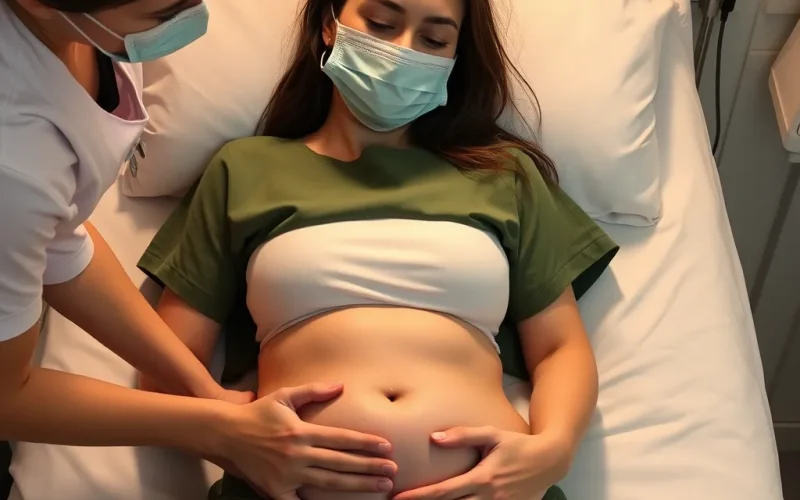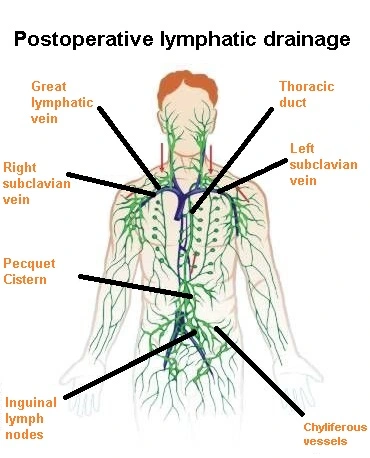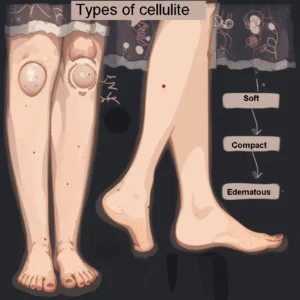

Postoperative lymphatic drainage
Postoperative lymphatic drainage: the key to a healthy, complication-free recovery
Postoperative lymphatic drainage is a therapeutic technique that has undoubtedly become a fundamental resource for those seeking an efficient recovery after surgery. From the beginning of the postoperative process, the body undergoes a series of changes such as swelling, fluid accumulation, and toxin retention. To achieve this, this technique, applied by professionals, stimulates the lymphatic system to eliminate these waste products more quickly and completely naturally.
Thanks to its many benefits, it is widely recommended by many specialists as an essential part of a recovery protocol. It not only improves circulation but also reduces inflammation and significantly accelerates healing.
1. Key Benefits of Postoperative Lymphatic Drainage

This treatment offers multiple advantages, especially when applied at the right time. Below are some of the most notable benefits that you shouldn’t overlook:
- Reduction of postoperative edema.
- Reduction of pain and inflammation.
- Stimulation of the immune system.
- Improves tissue oxygenation.
- Acceleration of cell regeneration.
In addition to all these benefits, postoperative lymphatic drainage promotes a feeling of general relief and emotional well-being, which undoubtedly also promotes the overall healing process.
2. When should postoperative lymphatic drainage begin?
The ideal time to begin this technique depends directly on the type of surgery and the individual progress of each patient. It is generally recommended to begin between 48 and 72 hours after the procedure, although always under strict medical supervision.
In certain surgeries, such as cosmetic ones (liposuction, abdominoplasty, or breast augmentation), more rigorous follow-up is required. In these specific cases, postoperative lymphatic drainage usually begins early to avoid potential complications such as fibrosis or fluid accumulation.
3. Types of surgery that most require it
Although all surgical interventions can benefit from this therapy, there are certain procedures that practically require it. Below is a list of the most common:
- Cosmetic surgeries (liposculpture, mammoplasty, rhinoplasty).
- Orthopedic procedures (knee or hip replacement).
- Oncological surgeries (mastectomy).
- Gynecological surgeries (hysterectomy).
- Major abdominal surgeries.
In each of these, the goal of postoperative lymphatic drainage is to facilitate a complication-free recovery while preventing infections or lymphatic stasis that could delay the process.
4. How is postoperative lymphatic drainage performed?
A specialized physical therapist or massage therapist applies this technique completely manually. During the procedure, they perform slow, gentle, and rhythmic movements that follow the natural direction of the lymphatic vessels. In some cases, they use complementary technology such as pressotherapy, which simulates the effects of manual massage.
The patient remains lying in a comfortable position throughout the session. The therapist does not use oils or creams, as the technique requires very precise maneuvers and high sensitivity to touch to effectively mobilize fluids.
5. How many sessions are recommended after surgery?
The number of sessions varies depending on the type of surgery and the individual body’s response. Generally speaking, professionals recommend between 6 and 10 sessions spread over the first few weeks postoperatively. Those undergoing cosmetic procedures, such as liposuction or abdominoplasty, may require up to 20 sessions for optimal recovery.
A common pattern is as follows:
| Week | Recommended sessions |
| 1 | 3 |
| 2 | 2 |
| 3 | 2 |
| 4 or more | 1 weekly |
The key is to maintain consistent postoperative lymphatic drainage throughout the inflammatory phase to achieve truly effective results.
6. Additional Recommendations to Enhance Postoperative Lymphatic Drainage
There are certain complementary practices that can undoubtedly enhance the positive effects of this technique. Here are some valuable suggestions:
- Stay well hydrated by drinking at least two liters of water a day.
- Avoid excessive salt intake as much as possible.
- Wear compression garments if prescribed by your doctor.
- Take frequent brisk walks to stimulate circulation.
- Sleep with your legs slightly elevated, if medically appropriate.
These suggestions do not replace treatment, but they undoubtedly significantly improve the body’s response to postoperative lymphatic drainage.
7. Common Myths About Postoperative Lymphatic Drainage
There are still some myths that are important to clarify to avoid making mistakes:
- “It hurts a lot”: False. It is a gentle and completely noninvasive technique.
- “It’s useless”: False. It is endorsed by medical specialists and physical therapists.
- “It’s only useful for cosmetic surgeries”: False. It is useful after any surgical procedure.
- “If I do it once, it’s enough”: False. It is a progressive treatment that requires consistency.
Breaking these myths helps more people understand the real benefits of postoperative lymphatic drainage and encourage them to include it in their recovery plan without hesitation.
8. Postoperative lymphatic drainage and quality of life
Beyond immediate physical recovery, this technique has a positive impact on emotional well-being. By reducing discomfort, accelerating healing, and improving body appearance after surgery, many people regain their self-esteem and confidence much more quickly.
In addition, postoperative lymphatic drainage also helps combat the anxiety associated with pain, swelling, and uncertainty that often occur during the postoperative phase.
9. Where and with whom should you do it safely?
This treatment is performed exclusively by certified lymphatic drainage professionals. Before starting, make sure the center has good references, medically trained staff, and appropriate hygiene protocols. Also, maintain constant communication with your surgeon to confirm that the treatment adequately supports your postoperative progress.
Conclusion
In conclusion, postoperative lymphatic drainage is an essential tool for those seeking an efficient, comfortable, and risk-free recovery after surgery. This technique accelerates the body’s natural processes, prevents complications, improves aesthetic appearance, and significantly elevates quality of life.
For all the above reasons, including this technique in your healing process makes the difference between a slow recovery and a truly healthy one. Always consult trained professionals and follow all medical instructions to take full advantage of its benefits.
Explore other related articles by clicking here and Visit the official website here




